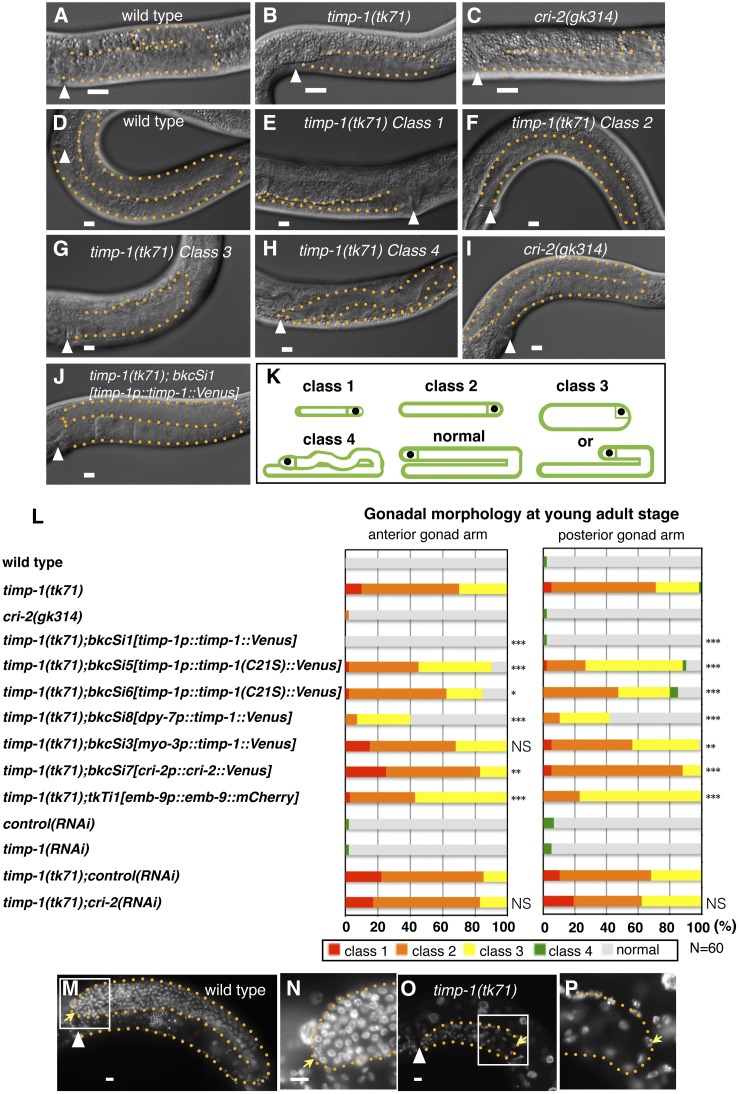Figure 2.
TIMP-1, but not CRI-2, is required for gonadal morphogenesis. (A–J) Gonad morphology of wild-type (A and D), timp-1(tk71) (B and E–H), cri-2(gk314) (C and I), and timp-1(tk71);bkcSi1[timp-1p::timp-1::Venus] (J) L3-stage larvae 30 hr after hatching (A–C), in young adults (D–J), and in the hermaphrodite posterior (A–D and F–J) and anterior (E) gonads. (K) The four classes of gonadal morphogenesis defects that were observed at the young-adult stage. Class 1, a very short and slender gonad arm on the ventral muscle; class 2, a short gonad arm of normal width on the ventral muscle; class 3, a short-arm gonad with an approximately twofold width or a slightly shortened gonad arm (in both types of class 3 defect, the gonad arm reaches the dorsal muscle). Class 4, a meandering gonad arm. (L) Percentages of abnormal gonad morphologies found for young-adult wild-type and mutant worms. P-values are indicated for Fisher’s exact test in comparison with timp-1(tk71) or timp-1(tk71):control(RNAi). * P < 0.05, ** P < 0.01, and *** P < 0.005. NS, not significant; (M–P) Staining (4’,6-diamidino-2-phenylindole) of gonadal nuclei in young-adult wild-type (M and N) and timp-1(tk71) (O and P) hermaphrodites. (N and P) show enlargements of the enclosed areas shown in (M and O), respectively. Posterior gonads are shown. The orange dotted lines mark the gonad boundaries. Arrowheads indicate the vulvae. Yellow arrows indicate distal tip cells. In all panels, the anterior region of the gonad is to the left and the dorsal region is at the top of the image. Bars, 10 μm. The animals were cultured at 20° except for those used in the RNAi experiments (24.5°). RNAi, RNA interference.

